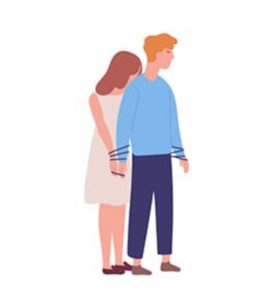Tips for Managing Uncertainty

Tips for Managing Times of Uncertainty
These are uncertain and highly anxiety-provoking times with an unclear end point. If you find yourself experiencing new and/or worsening feelings of anxiety, here are some strategies to assist you in minimizing these feelings during the COVID-19 pandemic or other circumstances yielding uncertainty:
1. Identify your feelings and validate them. Tell yourself it is okay to feel exactly how you are feeling. You may be feeling scared, angry, confused, frustrated, overwhelmed, etc. Identifying your feelings can assist you in developing greater control over them and therefore allowing you to release them in positive ways. Many find it helpful to write down their feelings in a journal.
2. Limit the amount of news you consume. Stick to one or two reputable news sources and set a time limit on how long you watch, listen to, or read the sources you have chosen (e.g., 20 minutes per day). Make an effort not to consume news in the evening, if possible. Information overload (even when the information is helpful) can greatly overstimulate our brains, therefore worsening feelings of anxiety or tension.
3. Establish a routine. Even though this routine will most likely differ from your pre-pandemic routine and may involve limited time outside of your home, creating a routine and sticking to it is crucial for minimizing feelings of anxiety or tension. Our brains crave repetition and predictability to counter the surges of adrenaline we experience when feeling anxious or overwhelmed. Make sure your routine is realistic and keep it as short as possible in order to set yourself up for success. Write your routine down and review it at the end of the day until it is fully established. If certain steps in your routine are unrealistic or not possible due to the current conditions, simply alter these steps. Remember to be patient with yourself during this process.
4. Maintain social connections. Humans are social creatures, and even the most introverted among us need social interaction. This is especially difficult during these times and we must therefore get a bit creative. Schedule regular video chat sessions with family and friends if face-to-face contact is not possible or not advised.
5. Contribute. Humans are innately wired with a desire to contribute. Think of the term in a literal sense: each day we intrinsically contribute knowledge, skills, services, ideas, emotions, behaviors, etc., through our day-to-day interactions, our careers, academic settings (if applicable), relationships, and through our sources of entertainment. Many people are unknowingly neglecting this need (even while satisfying all others) and wondering why they still “aren’t feeling quite right.” This is completely understandable, as the “need to contribute” is a particularly difficult one to clarify. Below are some examples of how to satisfy this during these times of uncertainty:
● Call an elderly neighbor and offer to pick up groceries for them.
● Consider participating in an online class or an online special-interest group to both gain and share knowledge and/or a newly-acquired skill.
● Contact a local animal shelter or one of your favorite charities/community organizations and ask about current options in which you can safely volunteer.
6. Move your body. Make physical activity part of your daily routine, even if it is 10 minutes per day of walking and/or stretching. Do what feels comfortable to you to ensure that you are not overworking your body and that you are enjoying the form of movement you have chosen.
7. Practice regular self-care. Self-care is a crucial part of our existence and it is a necessary element of our psychological well-being. Take time to listen to some of your favorite songs, read a good book, spend time in nature (if possible), or incorporate some deep-breathing exercises/guided meditation into your daily routine. Do what feels comfortable and positive to you.
If you choose to implement these tips into your day-to-day life, remember to be patient with yourself. Changing our current routines and thought patterns is a long and often difficult process. If you are finding these times particularly overwhelming, it may be helpful to seek the services of a licensed mental health professional to assist you in managing uncomfortable emotions during these difficult times.
-Sierra Shapiro, MA, LPC
Sierra Shapiro is a psychotherapist at Marsh Psychology Group. She can be reached at 248-860-2024 or sshapiro@marshpsychologygroup.com.








